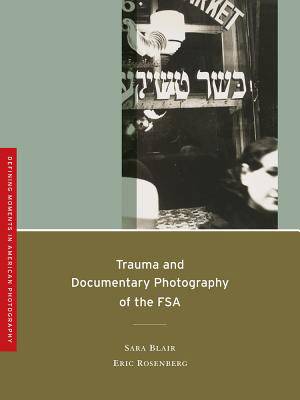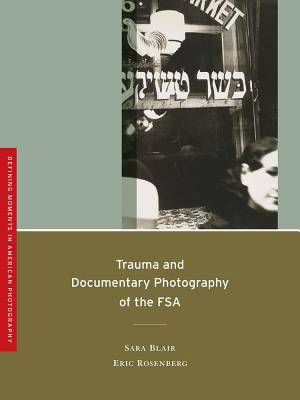
- Afhalen na 1 uur in een winkel met voorraad
- Gratis thuislevering in België vanaf € 30
- Ruim aanbod met 7 miljoen producten
- Afhalen na 1 uur in een winkel met voorraad
- Gratis thuislevering in België vanaf € 30
- Ruim aanbod met 7 miljoen producten
Zoeken
€ 59,45
+ 118 punten
Omschrijving
The latest volume in the Defining Moments in American Photography series, Trauma and Documentary Photography of the FSA proposes that we reconsider the work of the Farm Security Administration and its most beloved photographers in light of various forms of trauma in the 1930s. The authors offer new ways to understand this body of work by exploring a more variable idea of documentary photography than what the New Dealers proposed. Taking a critical look at the FSA photography project, they identify its goals, biases, contradictions, and ambivalences, while discerning strikingly independent directions among its photographers. Blair and Rosenberg discuss how, in the hands of socially minded photographers seeking to address and publicize suffering, photography and trauma mixed. In the volatility of that mixture, they argue, competing ideas for documentary took shape. Among the key figures studied here are some of the most beloved in American photography, including Walker Evans, Ben Shahn, and Aaron Siskind.
Specificaties
Betrokkenen
- Auteur(s):
- Uitgeverij:
Inhoud
- Aantal bladzijden:
- 121
- Taal:
- Engels
- Reeks:
Eigenschappen
- Productcode (EAN):
- 9780520265660
- Verschijningsdatum:
- 1/05/2012
- Uitvoering:
- Paperback
- Formaat:
- Trade paperback (VS)
- Afmetingen:
- 154 mm x 202 mm
- Gewicht:
- 222 g

Alleen bij Standaard Boekhandel
+ 118 punten op je klantenkaart van Standaard Boekhandel
Beoordelingen
We publiceren alleen reviews die voldoen aan de voorwaarden voor reviews. Bekijk onze voorwaarden voor reviews.








